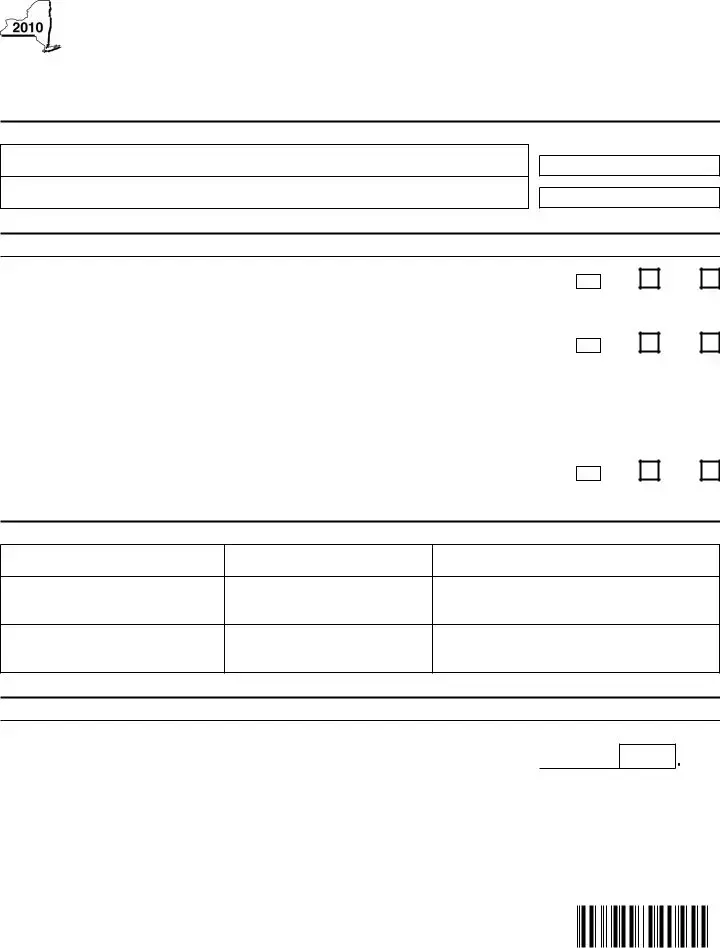The New York State Form IT-201, which is the Resident Income Tax Return, shares similarities with the IT-245 form primarily in its function as a key component for individuals filing their state tax returns. Just as the IT-245 form allows volunteers to claim specific credits, the IT-201 serves as the primary document for residents to report their annual income, calculate taxes owed, and identify eligibility for various deductions and credits. Both forms are necessary for accurately figuring and fulfilling state tax obligations, and the IT-245 form specifically requires attachment to the IT-201, highlighting their interconnected usage in the tax filing process.
Form IT-214, Claim for Real Property Tax Credit for Homeowners and Renters, is akin to the IT-245 in its purpose of providing tax relief to eligible New York State residents. While IT-245 offers a credit to volunteer firefighters and ambulance workers, IT-214 targets those who pay property taxes or rent on their primary residence. Both forms enable taxpayers to reduce their taxable income based on specific criteria met within the tax year, emphasizing New York State’s effort to provide financial incentives for various societal contributions and personal expenditures.
The New York State Form IT-216, Claim for Child and Dependent Care Credit, parallels the IT-245 form in that it caters to a specific group of taxpayers seeking to claim a tax credit for particular personal expenses. The IT-216 allows individuals to claim a credit for expenses related to child and dependent care, necessary for employment. Like the IT-245 form, which acknowledges the community service of volunteers, the IT-216 recognizes the economic contribution of working residents with dependents, offering them tax relief to mitigate some of the expenses incurred.
Similar to the IT-245, the New York State Form IT-215, Claim for Earned Income Credit, provides a tax benefit aimed at low-to-moderate-income working individuals and families. The primary goal of both forms is to offer financial relief: IT-245 by acknowledging volunteer services that benefit the community and IT-215 by supporting the economic stability of working residents. Each form identifies a specific segment of the population eligible for tax credits based on their contributions to society, whether through employment or volunteer service, underlining New York State’s comprehensive approach to tax incentives.
Form IT-272, Claim for College Tuition Credit or Itemized Deduction, shares a commonality with the IT-245 form in its targeted approach to tax credits. IT-272 allows taxpayers to claim a credit or deduction for qualified college tuition expenses paid for themselves, their spouse, or their dependents. This tax benefit, much like the one provided by IT-245 for volunteers, acknowledges the personal investment in education or community service by offering a financial incentive through the tax code. Both forms demonstrate New York State’s recognition of the value of personal contributions, whether to one's own education or to community safety and well-being.

